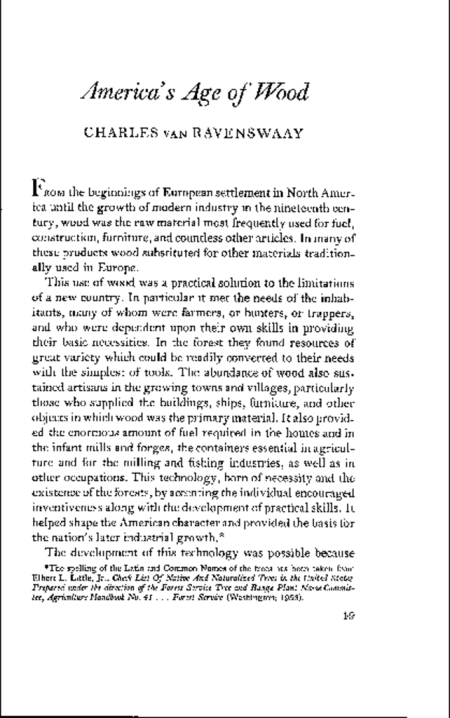Clues to the uniqueness of American character and events exist in wooden buildings and various wooden objects, which need the attention of more scholars. Until the growth of modern industry in the 19th century, the raw material most often used for fuel and building was wood. North America's 1,027 species of trees provided a wide variety and accounted for regional differences in the use of the various woods; many communities developed their own traditional use of local woods. A more sophisticated wood technology than that of Europe had developed in America by the early 19th century. Export of lumber to the West Indies and Europe represented a major part of colonial trade. One of the various woodworking implements that gradually evolved was the American felling axe. As coal and common metals became available and cheap, use of wood for firewood, fences, machine parts, bridges, roofing, and tools declined. By the 1750's a lumber shortage had begun along the East Coast, and by the end of the century conservation and reforestation were being advocated. The treelessness of the Great Plains has not yet received satisfactory explanation. Interpreting the products of America's age of wood required knowledge from the fields of botany, social and economic history, and science and history of design.
America's Age of Wood.
Publication Date
Volume
80
Part
1
Page Range
49-66
Proceedings Genre
